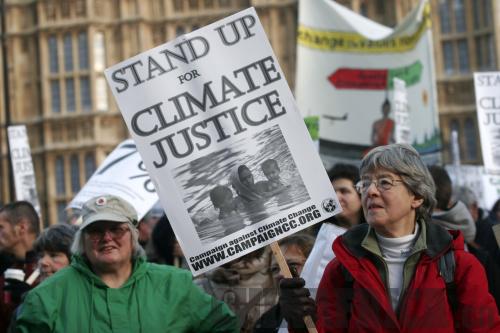|
|

|
|
EMOTIVE: Hopes to combat climate change remain alive after COP17 (XINHUA) |
Despite not achieving all it set out to do, the 17th Conference of the Parties (COP 17) of the United Nations Framework Convention on Climate Change in Durban, South Africa is widely seen as having achieved progress in a phasal sense.
The conference ended on December 11, 2011, two days later than planned due to serious disputes among negotiating parties. After difficult negotiations, a package of resolutions was passed by representatives from more than 200 countries and international organizations.
The two main outcomes were a second commitment period for the Kyoto Protocol, beginning on January 1, 2013 and end either on December 31, 2017 or 2020, and the launch of the Green Climate Fund, a process aimed at developing a protocol, another legal instrument or a legal outcome under the Convention applicable to all parties.
Future chartered
"The conference in Durban reached agreement on the two major concerns of China and other developing countries: the second commitment period of the Kyoto Protocol and the Green Climate Fund," said Zhou Dadi, Director General (emeritus) of the Energy Research Institute affiliated to National Development and Reform Commission (NDRC) of China.
He said that the conference charted the future for the global climate action after this conference and before 2020. Now the world can start to discuss plans after 2020, which was significant progress.
Zhou's opinion was echoed by UN Secretary General Ban Ki-moon. The package of resolutions is a significant step forward in global climate efforts, said Ban.
The resolutions passed at the closing of the conference were not perfect, but they were a landmark for global climate action, said Maite Nkoana-Mashabane, South African Minister of International Relations and Cooperation and also President of the COP 17.
According to the resolutions, an Ad Hoc Working Group on the Durban Platform for Enhanced Action will be established. It will be responsible for formulating a legal instrument or legal result applying to all parties to the UN Framework Convention on Climate Change. The establishment work will start in the first half of 2012, and be completed no later than 2015. Based on this legal instrument, all the parties to the convention will discuss emissions reduction beginning from 2020.
What's more, the second commitment period of the Kyoto Protocol will be officially approved of at the next UN Climate Change Conference in Qatar in 2012, and come into effect in 2013. And a new climate treaty including the United States and emerging countries such as China and India should be reached before 2015 and come into effect after 2020.
The Kyoto Protocol is the only legally binding agreement that sets targets for major developed countries. It was passed in December 1997 and came into effect in February 2005. Its first commitment period will expire at the end of 2012.
Moreover, the conference decided to officially launch the Green Climate Fund and establish its governing instrument. Building on the commitment by developed countries to transfer $100 billion a year by 2020 to developing countries for adaptation and mitigation, the Green Climate Fund will be essential for channeling funds for developing countries.
Also, the package of resolutions includes documents on monitoring and verification rules of emissions reduction, forest protection and clean-energy technology transfer to developing countries.
|